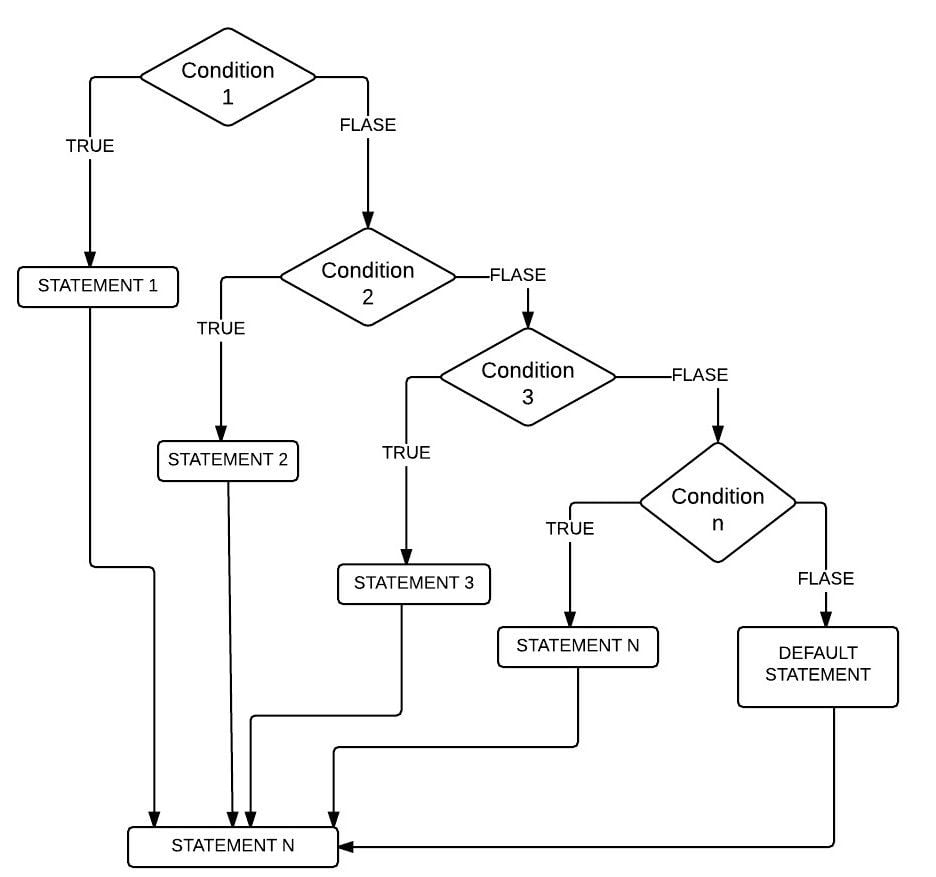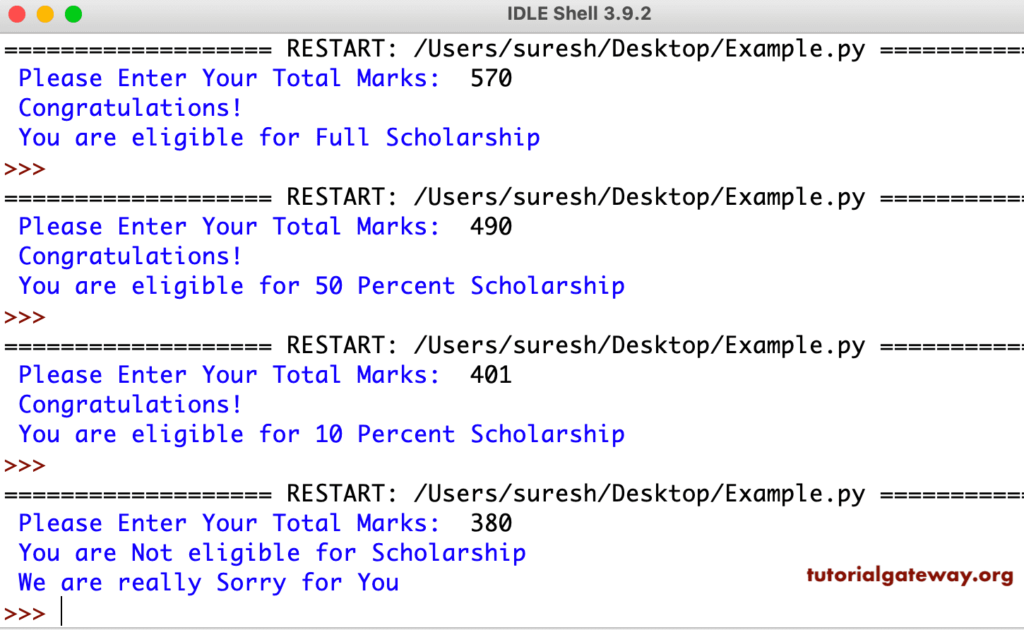The Python elif Statement is also called the Else If, and elseif is very useful when checking several conditions. Apart from this Python elif, we can also use the Nested If to achieve the same. However, as the number of conditions increases, the Nested If else complexity will also increase. Let us see the syntax of the same.
Python elif Syntax
The syntax of Python elif or else if statement is
if (condition 1):
statements 1
elif (condition 2):
statements 2
...........
elif (condition n):
statements n
else:
default line
The Python elif or else if statement effectively handles multiple lines by executing them sequentially. This means the elif will check for the first condition; if the condition is TRUE, then it will execute the statements present in that block.
If the condition is FALSE, then Python elseif will check the Next one (Elif or else if conditional statement), and so on. There will be some situations where condition 1 and condition 2 is TRUE, for example:
x= 20, y=10
Condition 1: x > y # TRUE
Condition 2: x != y # TRUE
In these situations, a block of code under Condition 1 will execute because the elif conditions will only be executed if their previous if statement (else) fails.
Elseif Flow Chart
The flow chart of this Python elif or elseif conditional statement is

Python elif Example
In this elseif program, the User will be asked to enter his total 6 subject marks. Using the Python Elif or else if statement, we check whether they are eligible for scholarships.
# Imagine you have 6 subjects and Grand total is 600
Totalmarks = int(input(" Please Enter Your Total Marks: "))
if Totalmarks >= 540:
print(" Congratulations! ")
print(" You are eligible for Full Scholarship ")
elif Totalmarks >= 480:
print(" Congratulations! ")
print(" You are eligible for 50 Percent Scholarship ")
elif Totalmarks >= 400:
print(" Congratulations! ")
print(" You are eligible for 10 Percent Scholarship ")
else:
print(" You are Not eligible for Scholarship ")
print(" We are really Sorry for You ")
Once you complete it, please save the Python file. Once you save the file, Let us hit F5 to run the script. The shell will pop up with the message “Please Enter Your Total Marks:” .
OUTPUT 1: We are going to enter Totalmarks = 570. The first if condition is TRUE. So, the elseif output displays the print code inside the if statement.
2nd Output: Let me test the Python elif or elseif statement this time. For this, we will enter Totalmarks to 490, which means the first IF expression will evaluate FALSE. It will check the (Totalmarks >= 480) condition, which is TRUE, so the program will print the code inside this block. Although the else if (Totalmarks >= 400) condition is TRUE, it won’t check this condition.
Output 3: This time we entered Totalmarks as 401 means the first IF condition, else if (Totalmarks >= 480) are FALSE. So, It will check the (Totalmarks >= 401), which is TRUE. So elseif or elif returns the block of code.
OUTPUT 4: We entered the Totalmarks as 380, which means all the IF conditions Fail. So, the elseif prints the else block.

In this Python elif or elseif program, we first declared Totalmarks to enter any integer value.
Totalmarks = int(input(" Please Enter Your Total Marks: "))
If the person’s Total marks are greater than or equal to 540, then the following lines will display
print(" Congratulations! ")
print(" You are eligible for Full Scholarship ")
If the first elseif condition of the elif fails, then it will go to the second. When the person’s total mark is greater than or equal to 480, the following code will be displayed:
print(" Congratulations! ")
print(" You are eligible for 50 Percent Scholarship ")
When the first and second conditions of the Python elif, elseif, or elseif fail, it goes to third. The following statements will be shown if the person’s Total marks are greater than or equal to 400.
print(" Congratulations! ")
print(" You are eligible for 10 Percent Scholarship ")
If all the above statements in the elseif statement fail, then it will go to the else block and print the following statements. Please refer to the Nested If article.
print(" You are Not eligible for Scholarship ")
print(" We are really Sorry for You ")
